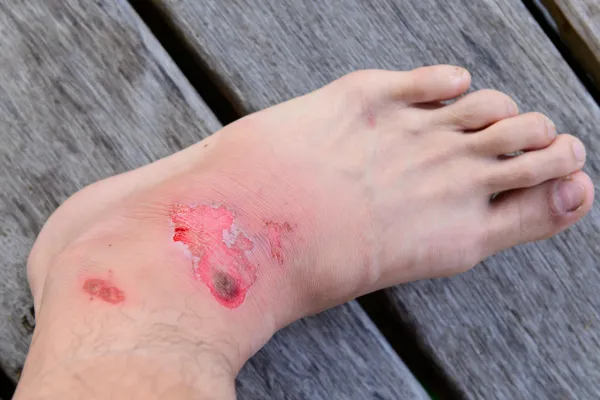
Why Your Foot Wound Might Keep Reopening (and How to Stop It)
It’s Healing… Then It’s Not
You think your foot wound is finally getting better—and then, boom. It splits back open again.
Frustrating, right?
This is something we see all the time at American Surgeons Group. A foot ulcer, sore, or surgical wound that starts to heal, but just won’t stay closed.
If this sounds familiar, you’re not alone—and it’s not your fault.
There are real reasons why wounds keep reopening. Let’s walk through the most common ones and what you can do to stop the cycle.
Why Foot Wounds Keep Reopening
1. Too Much Pressure on the Area
If you’re walking on a healing wound (even just a little), the pressure can slow healing or cause the skin to tear again.
This happens a lot on:
Heels
Balls of the feet
Tips of the toes
Especially if you’re on your feet a lot or don’t have proper footwear.
2. Poor Blood Flow
Feet are already far from the heart, which makes healing slower. But if you have poor circulation, like with diabetes or vascular disease, it’s even harder for blood to carry oxygen and nutrients to the wound.
3. Infection That Never Fully Cleared
Sometimes a wound looks healed on the surface, but bacteria are still causing trouble underneath. That hidden infection can weaken the skin and open it back up.
4. Friction or Rubbing from Shoes
Tight shoes, sandals with seams, or walking barefoot can all rub against a healing wound and cause it to reopen—especially if the area is dry or cracked.
5. Not Enough Moisture (or Too Much)
Dry wounds can crack. Wet ones can break down the skin. It’s all about finding the right balance for your healing skin.
6. Underlying Conditions
Things like:
Diabetes
Neuropathy (loss of feeling in the feet)
Autoimmune issues
can make your skin more fragile and slow healing, which increases the risk of reopening.
Why This Is a Bigger Deal Than It Seems
Every time a wound reopens, the healing process basically starts over. And repeated reopening makes:
Scar tissue weaker
Infection risk higher
Healing take longer overall
In serious cases, repeated reopening can even lead to bone infection, hospital stays, or worse.
How to Keep a Wound Closed for Good
You don’t have to figure this out alone. But here’s where to start:
1. Protect the Area
Use padding, offloading boots, or soft dressings to keep pressure off the wound.
Custom orthotics or diabetic shoes can also help reduce rubbing and protect fragile areas.
2. Keep It Clean, Moist, and Covered
Use wound care products recommended by your doctor—not just drugstore ointments. The right kind of dressing can make a huge difference.
3. Check Your Shoes and Socks
Make sure your shoes:
Don’t press on the wound
Don’t have rough seams or tight spots
Allow room for bandaging if needed
Soft, seamless socks can also help reduce irritation.
4. Don’t Ignore Small Signs
If the wound starts to:
Feel warm
Look red or swollen
Leak fluid
Hurt more than before
It’s time to get help. These are signs it could reopen—or already has.
5. Work With a Specialist
A podiatrist can:
Remove dead tissue (debridement)
Treat infections early
Use advanced dressings and technology
Give you a real plan to keep it closed
You're Not Alone (And It’s Not Hopeless)
Wounds that reopen again and again can feel discouraging. But there’s a reason—and there’s a solution.
At American Surgeons Group, we’ve helped thousands of patients close wounds for good and get back to walking without worry.
Tired of Your Wound Reopening?
Let’s get you the right support, tools, and treatment to help your foot heal—for real this time.
Reach out today to schedule your wound care consultation in Chicago. We're here to help you move forward, one step at a time.
